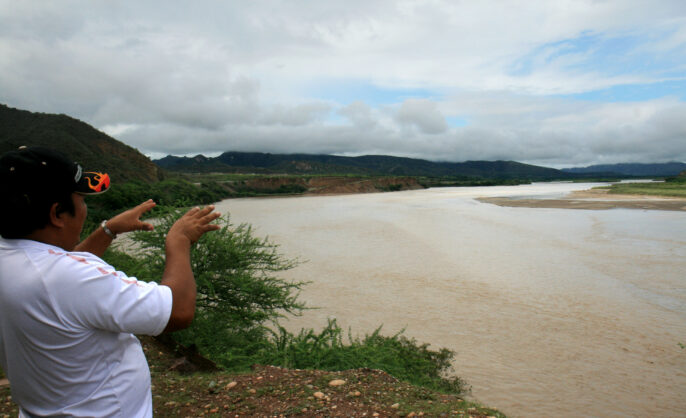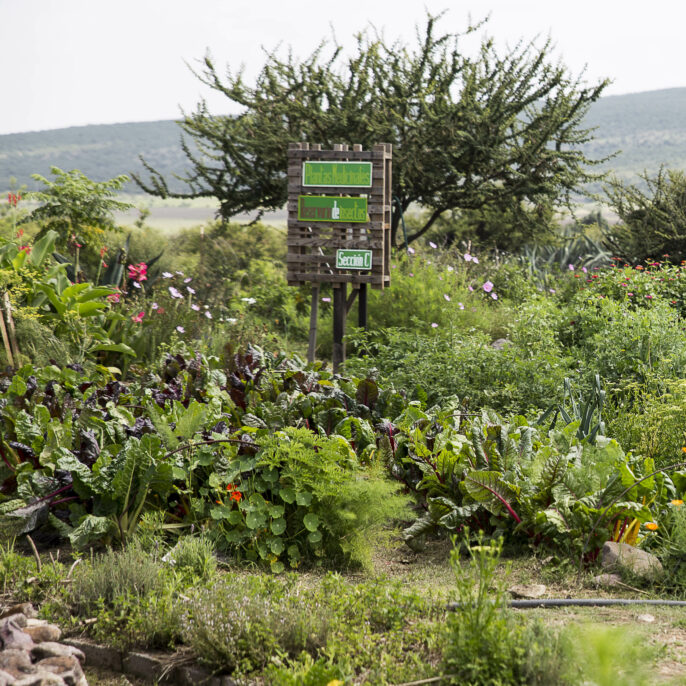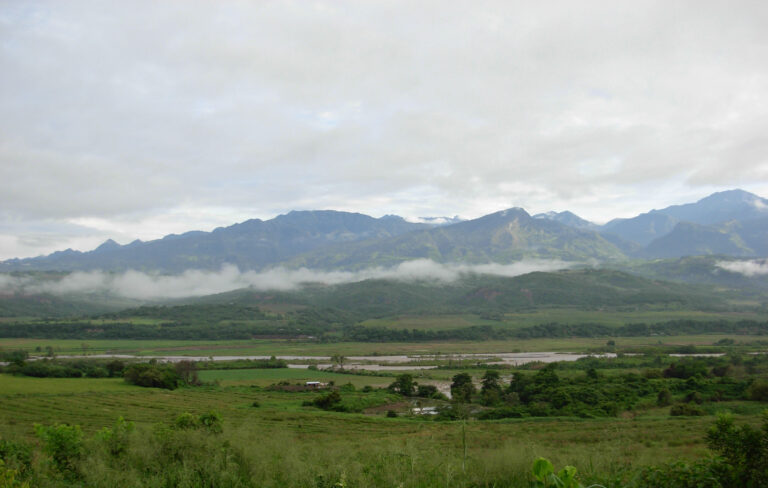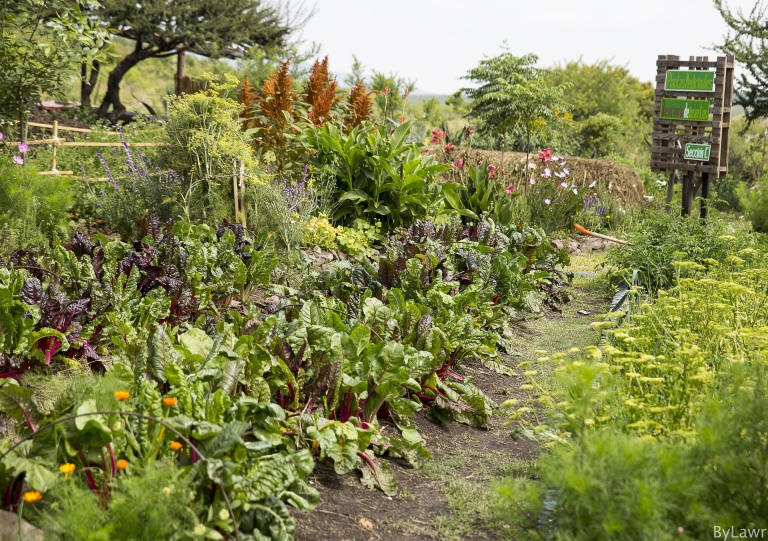Newly-Developed Concrete Absorbs CO2, Insulates & Grows Food
Researchers in Barcelona, Spain have found an innovative solution to the long-established emissions problem.
In Barcelona, Spain, researchers at Universitat Politècnica de Catalunya (UPC) have found an innovative solution to the long-established emissions problem. Science Daily reports that they discovered how to build megastructures with a biological concrete that not only lowers CO2 and regulates heat, but is pleasing to look at.
It is not only a medium for growth and a construction material, but a means to regulate temperatures indoors while removing CO2 from the atmosphere. The surface of the concrete grows mosses, lichens, fungi and other biological organisms.
The invention needs to be used in regions with a calm Mediterranean climate, but enables buildings to absorb CO2 and release oxygen with micro-algae and other “pigmented microorganisms” that coat it.
While vertical gardens certainly enhance its aesthetic appeal, one might declare that its beauty is sourced in its clever design.
The concrete works in layers: The top layer absorbs and stores rainwater and grows the microorganism underneath; it can also absorb solar radiation, which insulates the building and regulates temperatures for those who live inside. The final layer of the concrete repels water to keep the internal structure safe, shares Inhabitat.
Normal concrete has high pH levels that don’t allow plants to grow, but this newly developed one is more acidic, which lowers the pH to levels safer for growth.
The research team, led by Antonio Aguado and supported by Ignacio Segura and Sandra Manso, has big plans for the design. They share on UPC’s website:
“A further aim is that the appearance of the façades constructed with the new material should evolve over time, showing changes of colour according to the time of year.”
What are your thoughts? Comment below and share this news!
This article was written By
Do you like to read about science, technology, psychology, personal development or health? There is a new social network called Aweditoria that is purely based on interests. You can follow topics there and see the best small stories, ideas and concepts in those fields. Click here to try it out, it’s free and only takes few seconds to join. You can also follow Myscienceacademy.org on Aweditoria!
Get more content like this in your inbox!Sign up fo our free newsletter:
100 Amazonian Communities Construct Government To Protect Their Lands
The Wampis people of Peru recently created the nation’s first Autonomous Indigenous Government, which does not seek independence from Peru but intends to protect their rights and their territory.
On November 29, in the town of Soledad, the Wampis announced the formation of their autonomous government that brings together 100 Wampis communities, representing over 10,000 people that reside in the northern Amazonian part of Peru which extends across 3.2 million acres (roughly the size of the U.S. state of Connecticut).
The process that lead to the formation of the new government took place over several years, with over 50 community meetings and 15 general assemblies according to Wampis officials. They were inspired to create the new government by the United Nations Declaration on the Rights of Indigenous Peoples as well as Peruvian laws that acknowledged indigenous rights.
The motivation for the new government also grew out of frustration with how Wampis territory was being sold or given away, without their consent, to various businesses.
One of the Wampis leaders, Andres Noningo Sesen, explained some of their goals in a press statement released in December.
“We will still be Peruvian citizens but now we will have our own government responsible for our own territory. This will allow us to defend our forests from the threats of logging, mining, oil and gas and mega dams. As every year goes by these threats grow bigger,”
-Andres Noningo Sesen, Wampis Leader
One of the defense related examples given by Wampi leaders is their sustained resistance to gold mining operations in their territory by the Afrodita, S.A. Company which was finally ordered to suspend operations along the Cenpea and Maraño rivers. Both rivers suffered from severe mercury and cyanide stemming from mining activities in the area and indigenous resistance to the pollution is credited with forcing the suspension.
“This unity will bring us the political strength we need to explain our vision to the world and to the governments and companies who only see the gold and oil in our rivers and forests. For them, too often we are like a small insect who they want to squash. Any activity planned in our territory that will affect us will now have to be decided by our own government which represents all our communities,”
-Andres Noningo Sesen, Wampis Leader
The Wampis communities started the process towards autonomy by passing a statute known as the Statute of the Autonomous Territorial Government of the Wampis Nation, in which they outlined their plans for the future including protection of religion, spirituality, education, language and the recovery of ancestral place names.
While Peruvian officials have not publicly acknowledged or commented on the formation of the Wampis Autonomous Indigenous Government, Wray Perez Ramirez, the new President of the Autonomous Territorial Government has expressed confidence in their effort.
“We trust that the Peruvian State will support our initiative. This will assist in the compliance of their obligations to respect the fundamental rights of the Indigenous Peoples to determine their own future,” Ramirez said.

![]()
UN Says Small-Scale Organic Farming Only Way to Feed the World
Even though this article may have been published a year or two ago, it still speaks to the importance of our need to focus our anti-climate change practices on regenerative agriculture. That is why we will continue to republish this so it can become common knowledge. We understand there may be sympathizers for GMO and monoculture farming – the other side of the story must also be heard. – Valhalla
Even as the United States government continues to push for the use of more chemically-intensive and corporate-dominated farming methods such as GMOs and monoculture-based crops, the United Nations is once against sounding the alarm about the urgent need to return to (and develop) a more sustainable, natural and organic system.
That was the key point of a new publication from the UN Commission on Trade and Development (UNCTAD) titled “Trade and Environment Review 2013: Wake Up Before It’s Too Late” which included contributions from more than 60 experts around the world.
The cover of the report looks like that of a blockbuster documentary or Hollywood movie, and the dramatic nature of the title cannot be understated: The time is now to switch back to our natural farming roots.
The findings on the report seem to echo those of a December 2010 UN Report in many ways, one that essentially said organic and small-scale farming is the answer for “feeding the world,” not GMOs and monocultures.
According to the new UN report, major changes are needed in our food, agriculture and trade systems, with a shift toward local small-scale farmers and food systems recommended.
Diversity of farms, reducing the use of fertilizer and other changes are desperately needed according to the report, which was highlighted in this article from the Institute for Agriculture and Trade Policy.
The Institute noted that these pending deals are “primarily designed to strengthen the hold of multinational corporate and financial firms on the global economy…” rather than the reflect the urgent need for a shift in agriculture described in the new report.
Even global security may be at stake according to the report, as food prices (and food price speculating) continue to rise.
“This implies a rapid and significant shift from conventional, monoculture-based and high-external-input-dependent industrial production toward mosaics of sustainable, regenerative production systems that also considerably improve the productivity of small-scale farmers,” the report concludes.
You can read more about the report from the Institute by visiting their website here.
Source: althealthworks.com
Some are doing the local organic farming right.

#1Love
Ugandan Engineers Built A Solar-Powered Bus for African Roads
Ugandan engineers have built a solar-powered electric bus that they say is a first of its kind in East Africa and think it will revolutionize the automotive market in the region. The Kayoola, as its called, is a 35-seater that can run for up to 80 kilometers on two power banks that can also be recharged by solar panels installed on the roof of the bus.
Paul Musasizi, chief executive officer of Kiira Motors Corporation (KMC), the state-funded company behind the vehicle, says with the potential for solar power in Uganda, it only made sense that engineers started to leverage the energy source for cars.
“The bus is purely electric and our idea is to test the strength of solar energy in enabling people to move,” he told a local newspaper.
The company built the prototype with funds from the Ugandan government. But KMC is hoping to attract investors to the project to start producing the buses for the mass market by 2018 at a retail price of $58,000. Typically, 35-seater buses retail between $35,000 to $50,000.
“As we continue with developing concepts, we are also studying the market,” Doreen Orishaba, one of the engineers in the project, told Uganda’s Observer newspaper. “We want to see that we don’t make vehicles for stocking but for production on orders.”
This is not KMC’s first foray into energy efficient car-making. Last year, the company introduced the Kiira Smack, a petrol-electric hybrid that it said would come into the market by 2018 as well for a $20,000 price. But analysts were doubtful at the time of the project’s commercial viability. The price could prove prohibitive, they argued, in a market that sells an estimated 20,000 cars a year. Additionally, in a part of the world where electricity is not a widely available commodity, electric dependent cars could put undue pressure on national grids.

But by using solar as a power source for the Kayoola, KMC may have found a way to overcome that challenge in this instance.
“Uganda being one of the 13 countries positioned along the equator, gives us about eight hours of significant solar energy that can be harvested,” Musasizi says.
5 Apps That Can Improve The World
It happens to us all. We are doing our daily commute to work or school and we switch on the backlight of our smartphones to shop around. What have the creatives made this week? What new ingenious application can improve my life? – But, hold on, what if your next favourite app can not only improve your life, but simultaneously …




















